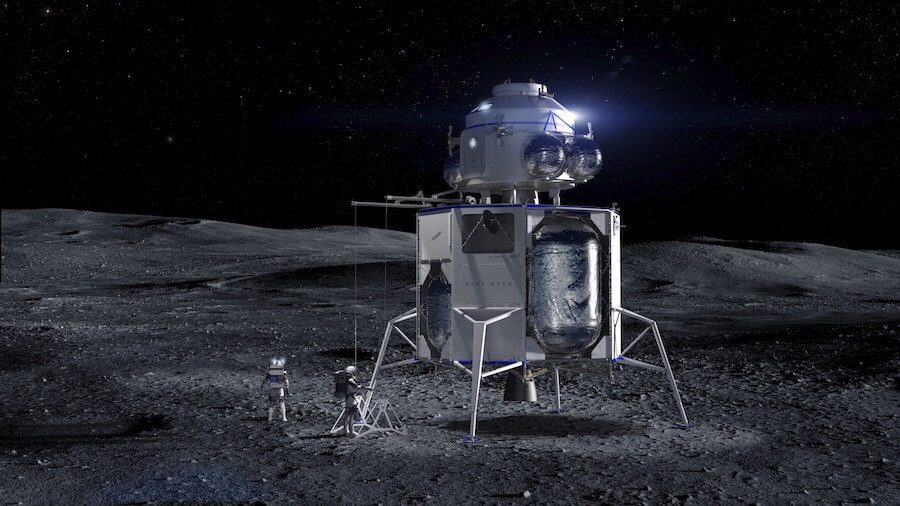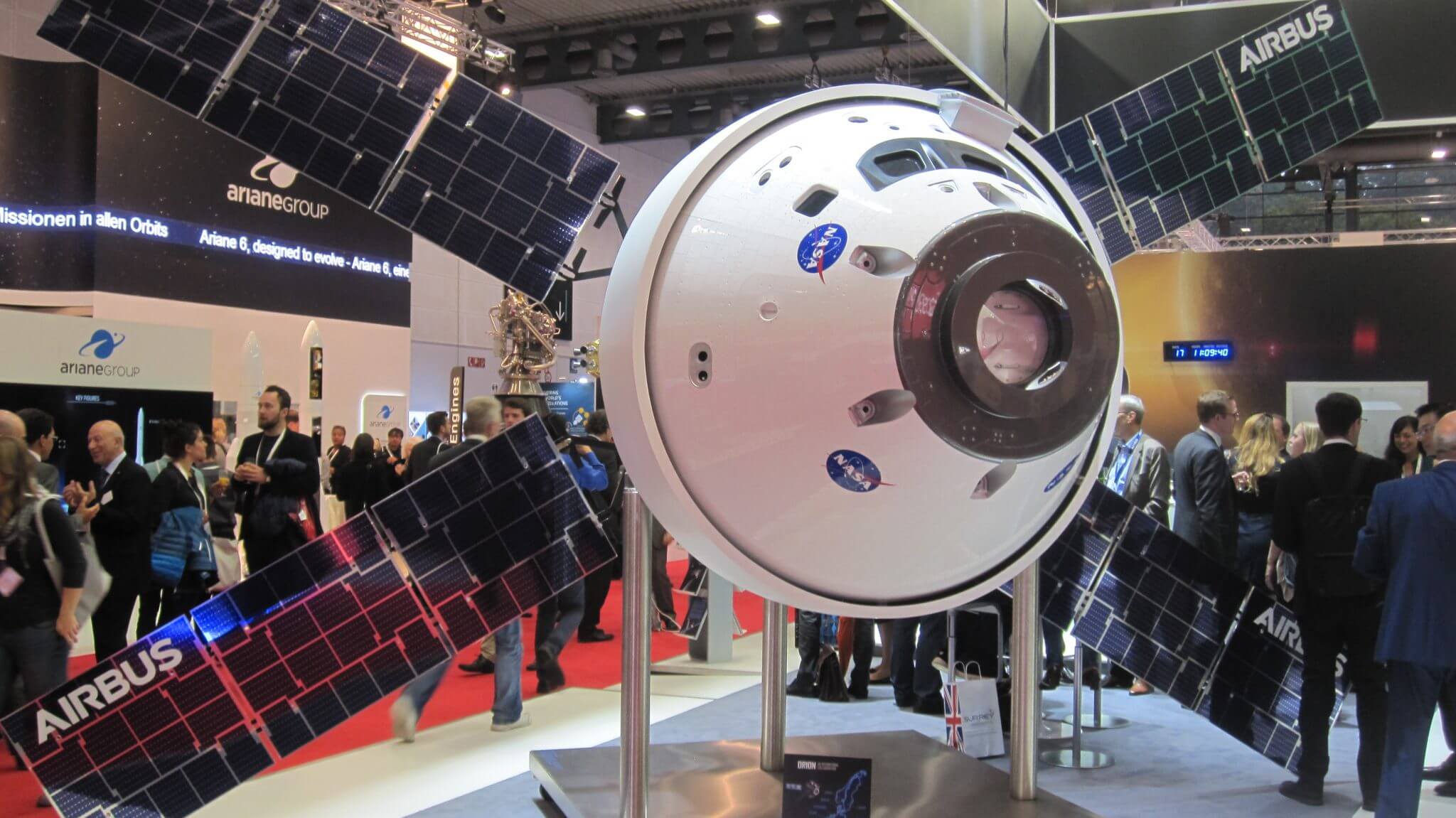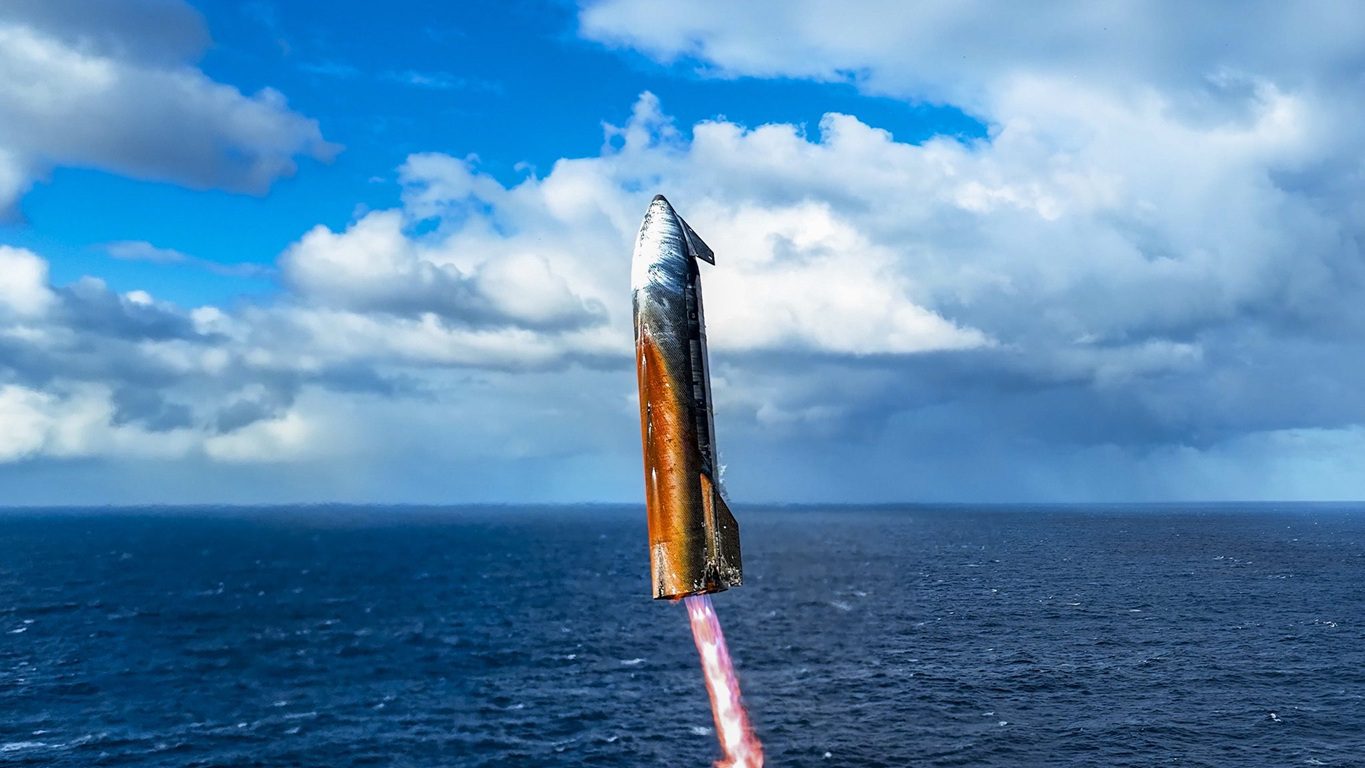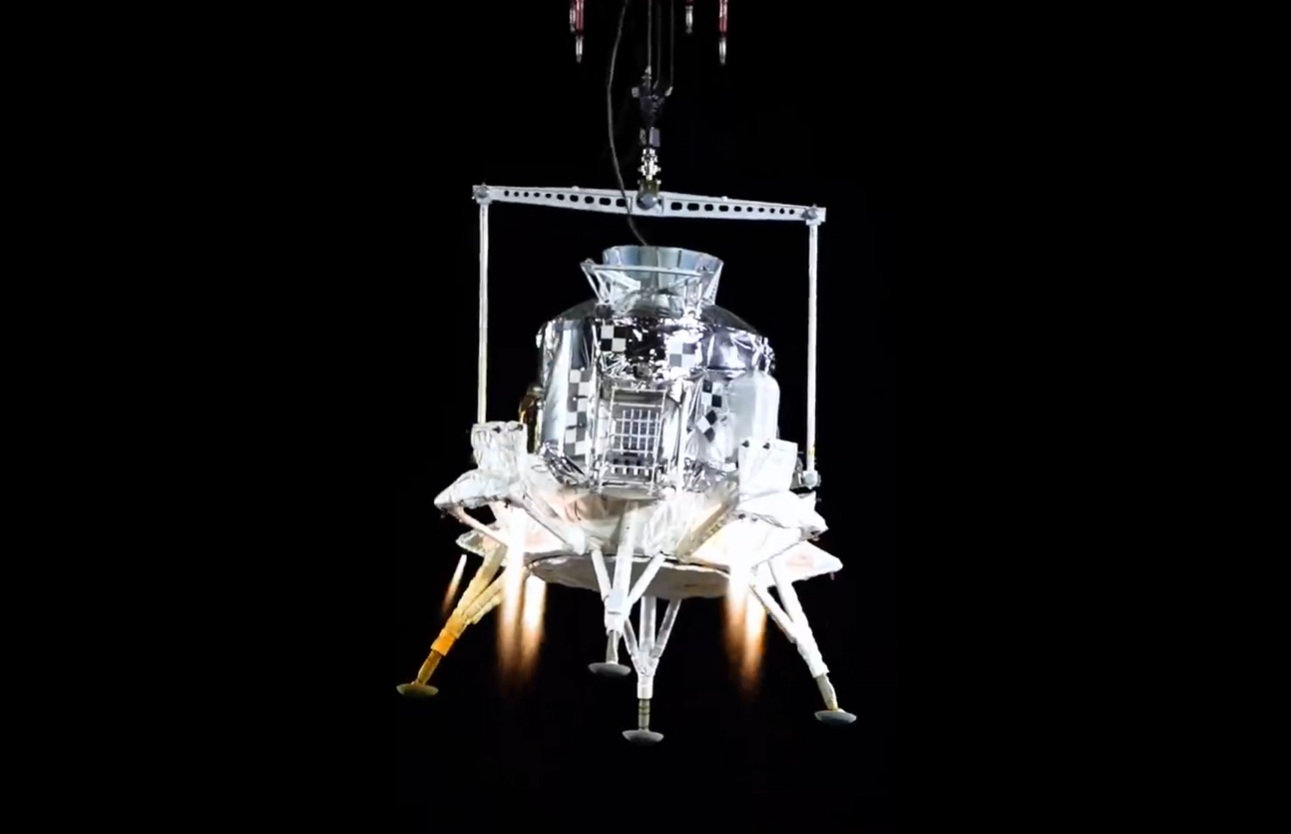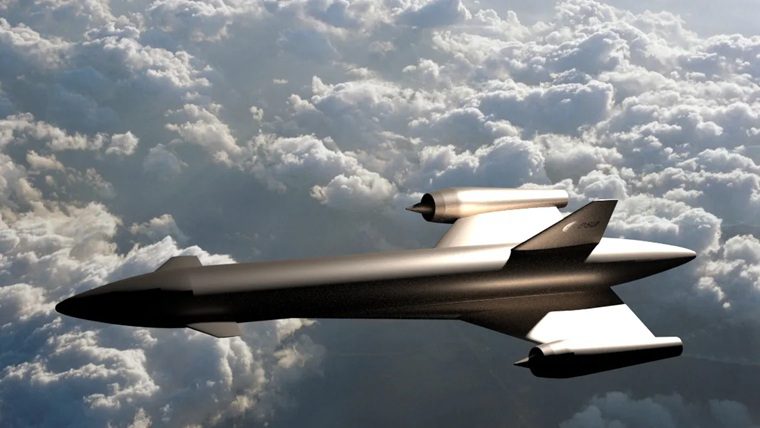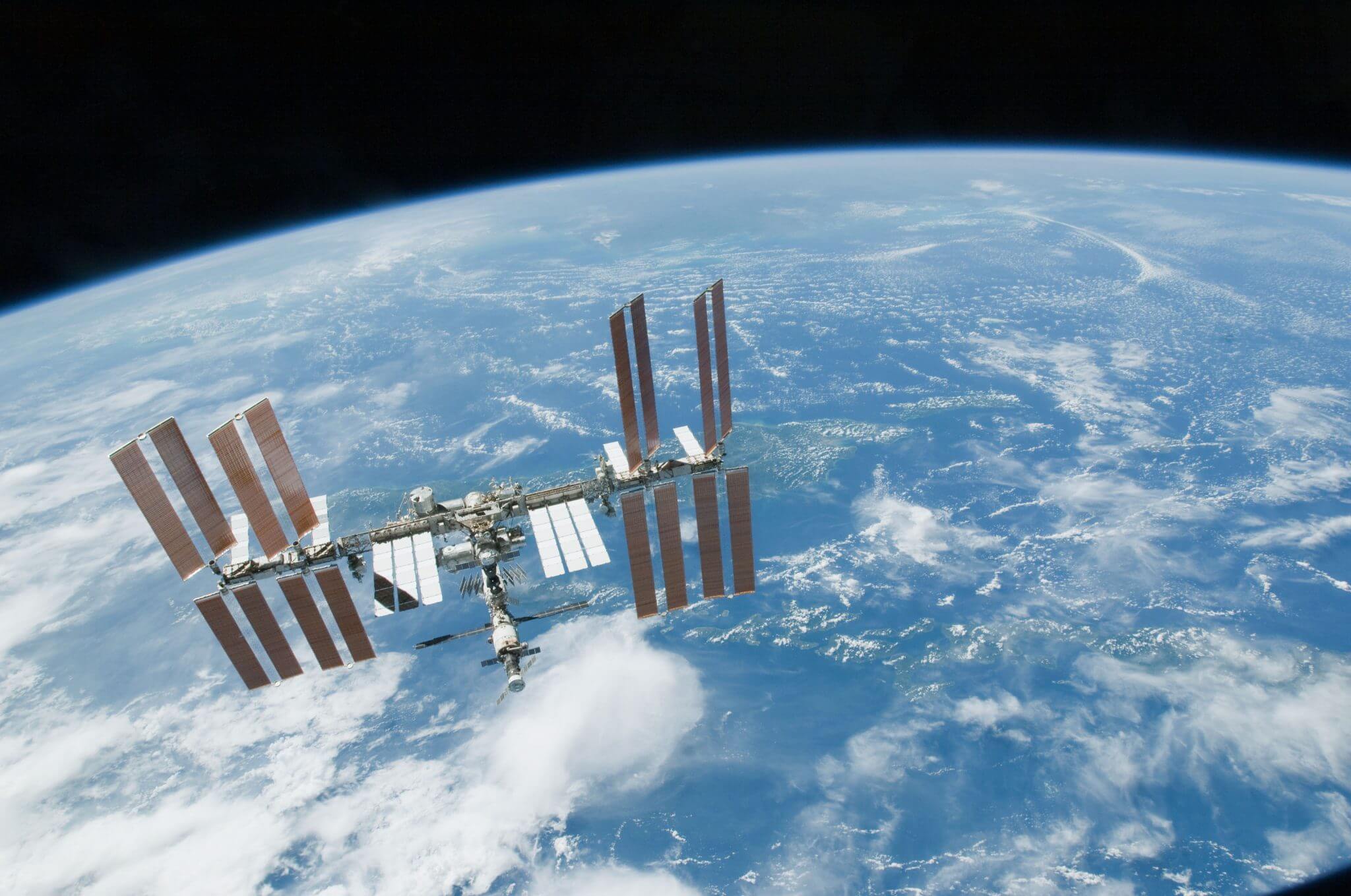While US Vice President Mike Pence’s target for a US human landing on the surface of the Moon was doubted by some – not least because a lunar lander would take years to develop – now there could be a solution. Amazon billionaire Jeff Bezos has revealed, in a presentation in Washington DC, that his Blue Origin space company is close to completing the design of its Blue Moon lunar landing vehicle.
The 15-metric-ton lander, in fully loaded condition, will be able to carry 3.6 metric tons to the lunar surface. Initially the craft would be used to transport unmanned rover vehicles and other equipment. The items would be lowered from the top of the lander onto the surface by a davit crane. However later stretched-tank versions will be able to carry more than 6 metric tons and would allow the use of a yet-to-be-developed human carrying ascent vehicle.
The lander employs a new BE-7 engine, which will use liquid hydrogen and LOx (liquid oxygen) as its propellants. The idea is that water ice detected in shadowed craters at the lunar poles could easily be turned into these so that eventually it could be relaunched as a reusable lander into orbit. The other advantage of this combination is that it can be used as a fuel cell power system, allowing a 2.5 kW power supply during lunar nights when alternative solar arrays would not work.
The problem for this cryogenic propellant combination is storage. Liquid Hydrogen has to be kept below 252 degrees Celsius to minimise boil off. According to reports, Jeff Bezos did not mention when the first flight of the Blue Moon would take place but is said to be aiming for 2024.
NASA appears to be serious about its target of returning humans to the Moon by 2024. It has named the project Protect Artemis after the Greek goddess who was the twin sister of Apollo – NASA’s original Moon landing project name. The White House fully supports Project Artemis. To make it work, the Trump Administration has added US$1.6 billion to NASA’s US$21 billion request for the 2020 fiscal year. About US$1 billion of this extra money will be spent on developing a lunar lander/ascent vehicle. The Lunar Gateway orbiting lunar space station is having its spending reduced by US$321 million as the initial number of modules has been reduced to just two.
By the way, Artemis is the goddess of forests, young women and chastity, and also closely connected with hunting (the Roman equivalent is Diana). The name gives the project a feminine bent that will please many. NASA Administrator Jim Bridenstine has pointed out that this is appropriate given that Project Artemis will land the first woman on the Moon.
However, Lori Garver, former NASA Deputy Administrator, has warned that the Artemis name may be an inauspicious choice. In one Greek legend, the virginal goddess Artemis kills Orion the Hunter, the man she loves, after being tricked by Apollo into thinking that Orion had attacked one of her priestesses. Orion is the name of NASA’s main human lunar orbital transfer spacecraft, which will be used on Project Artemis.
Comment by David Todd: The important thing is for NASA to use the SLS/Orion combination for lunar exploration while it can, before being usurped by SpaceX and its Starship/Super Booster (aka BFS/BFR) combination or Blue Origin’s New Armstrong heavy-lift rocket derivative of the New Glenn.
Of the possible lunar exploration choices set out by this writer last year, in a presentation at the British Interplanetary Society in London, the White House and NASA have intimated that they are likely to go for Option 2 (your correspondent’s second choice). This still uses a Lunar Gateway orbiting station (albeit in a cut-down mode), but with an accelerated human lunar landing. Option 2 has some merit – not least in providing a space station design that might one day replace ISS in low Earth orbit as well as an orbiting space station around the Moon. However, it is more expensive and may be slow, although not as slow as the original NASA Lunar Gateway plan.
By the way, Option 1 was to cancel SLS altogether after the first manned flight of Orion EM-1. This is low cost but wastes the investment in SLS. It is also too slow to get humans onto the Moon and is probably too high risk in that it relies on commercial launchers and provides no successor to the ISS.
Similar to Robert Zubrin, your correspondent’s first choice was Option 3, a more direct route to the lunar surface via a two-launch straight lunar landing mission architecture. This would have been followed by an Earth orbiting space station replacement for ISS, a derivative of which would also provide a Lunar Gateway space station for longer-term lunar exploration/habitation. See here (listed under Mars rocket – SpaceTrak subscription required) for the full presentation.
Update on 24 May 2019: NASA has underlined its support for some sort of Lunar Gateway space station by ordering its first module – the Power and Propulsion Element (PPE) – from Maxar under a US$375 million contract.
Meanwhile, former Sierra Nevada executive Mark Sirangelo has left his special adviser position at NASA after only six weeks. This followed his plan to create a new NASA “Moon to Mars Mission Directorate” being rejected by the US Congress.

